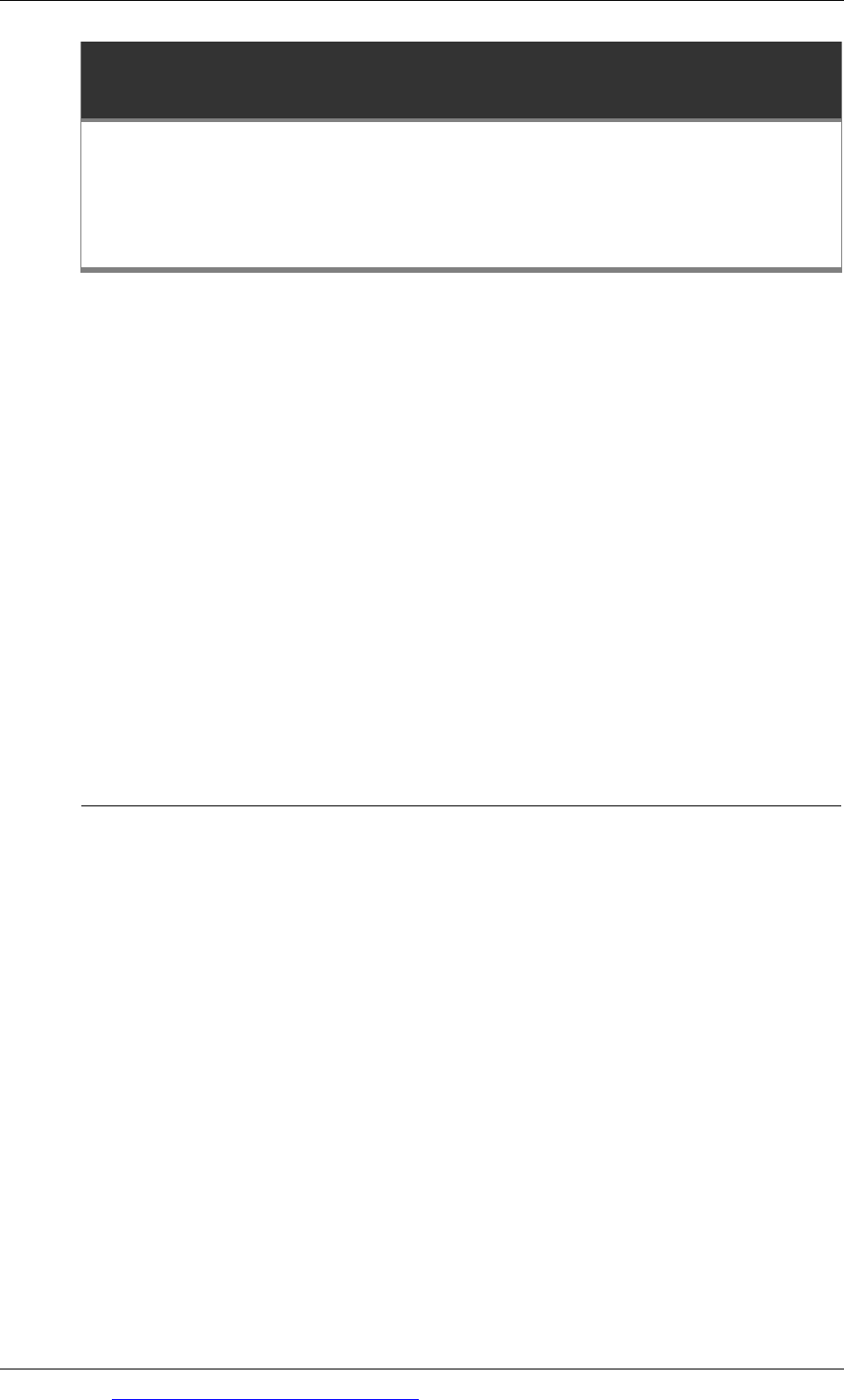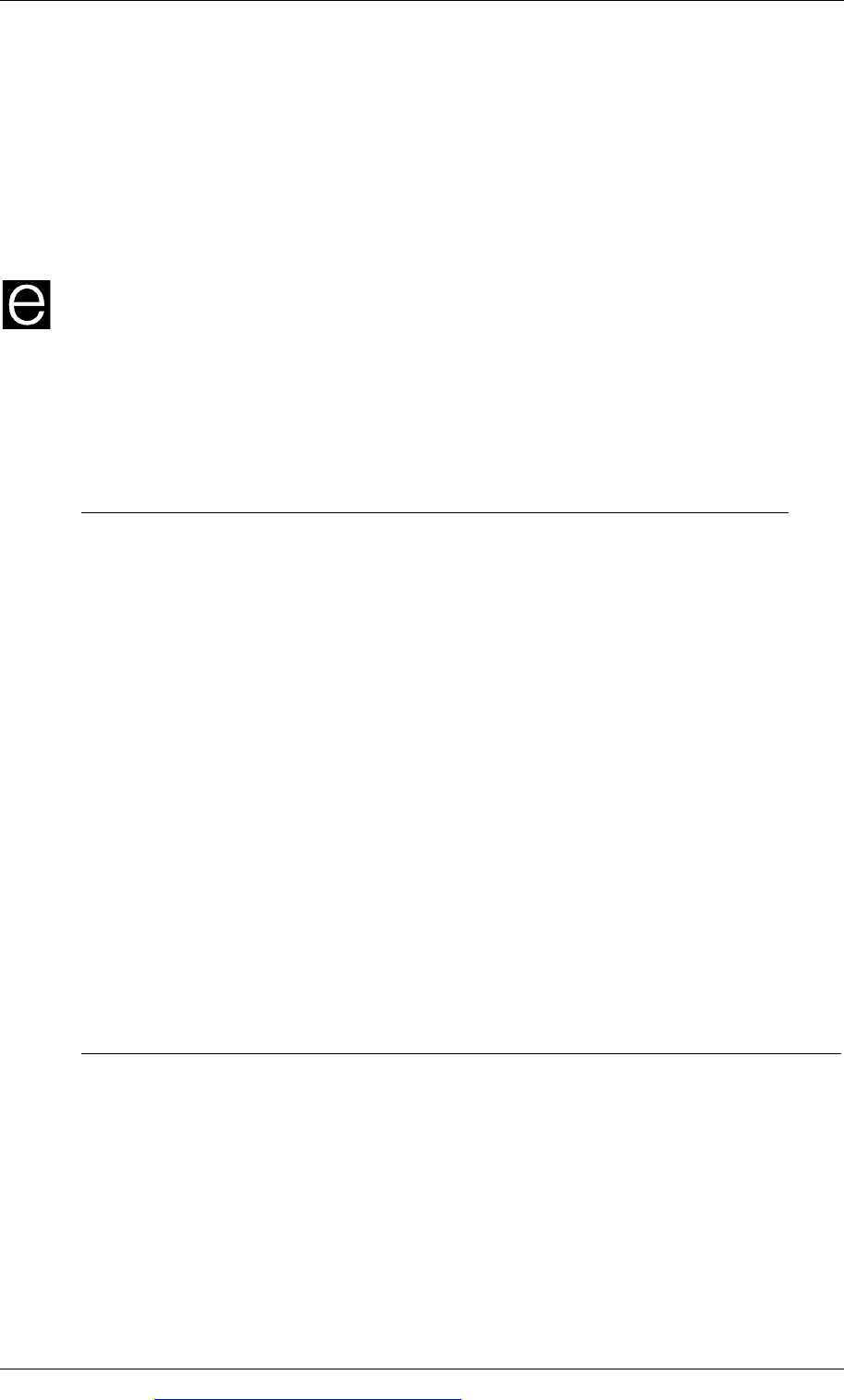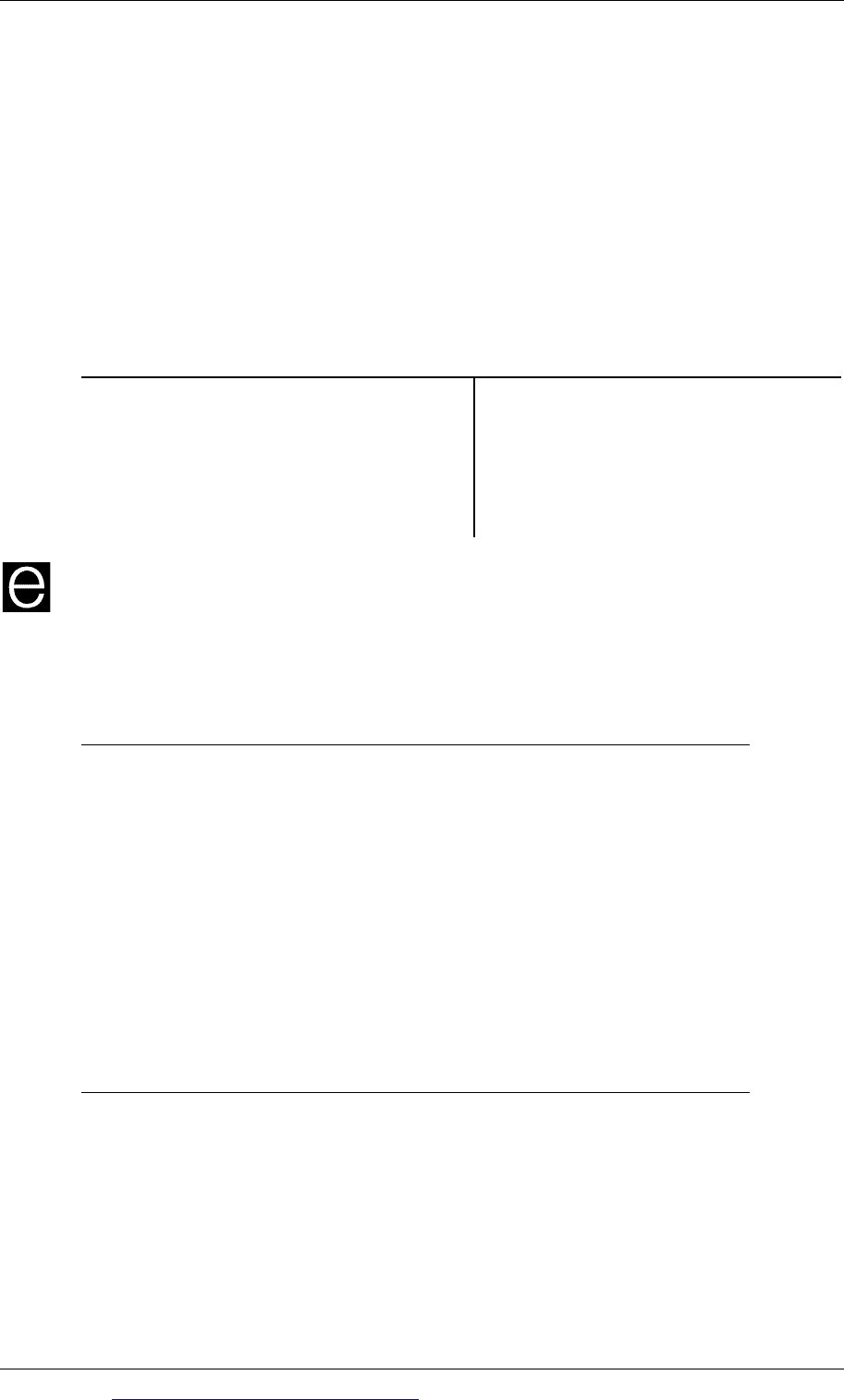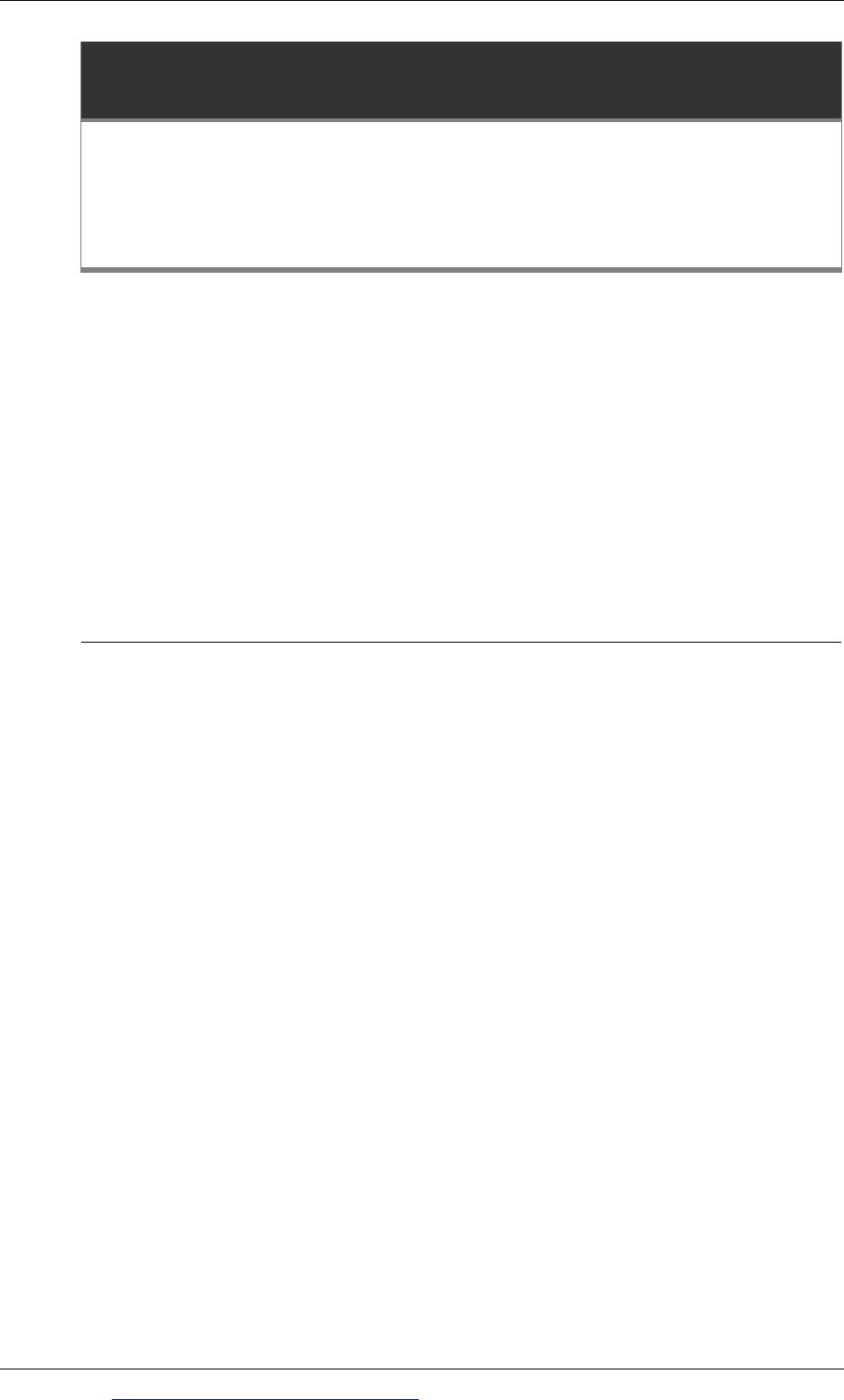ACCA F7 (INT) Financial Reporting - Study text - 2010 - Emile Woolf Publishing
Подождите немного. Документ загружается.


Chapter 17: Statements of cash flows
© EWP Go to www.emilewoolfpublishing.com for Q/As, Notes & Study Guides 335
Required
Present the cash flows from operating activities as they would be presented in a
statement of cash flows using
the direct method.
the indirect method.
Answer
Workings: direct method
Cashfromsales
$
Tradereceivablesat1JanuaryYear7 233,000
Salesintheyear 1,280,000
––––––––
1,513,000
Tradereceivablesat31DecemberYear7 (219,000)
––––––––
Cashfromsalesduringtheyear 1,294,000
––––––––
Cashpaidforwagesandsalaries
$
Accruedwagesandsalariesat1JanuaryYear7 8,000
Wagesandsalariesexpensesintheyear 290,000
–––––––
298,000
Accruedwagesandsalariesat31DecemberYear7 (5,000)
–––––––
Cashpaidforwagesandsalaries 293,000
–––––––
Purchases
$
Closing inventory at 31 December Year 7 124,000
Cost of sales 400,000
–––––––
524,000
Opening inventory at 1 January Year 7 (118,000)
–––––––
Purchases in the year 406,000
–––––––
Cash paid for materials supplies
$
Trade payables at 1 January Year 7 102,000
Purchases in the year (as above) 406,000
–––––––
508,000
Trade payables at 31 December Year 7 (125,000)
–––––––
Cash paid for materials 383,000
–––––––
Cash paid for other expenses is the amount for expenses after deducting the
depreciation charge: $350,000 - $25,000 = $325,000.

Paper F7: Financial reporting (International)
336 Go to www.emilewoolfpublishing.com for Q/As, Notes & Study Guides © EWP
Interest and tax payments Tax Interest
$ $
Liability at the beginning of the year 52,000 30,000
Taxation charge/interest charge for the year 40,000 50,000
–
––––––
–––––––
92,000 80,000
Liability at the end of the year (43,000) (45,000)
–
––––––
–––––––
Tax paid/interest paid during the year 49,000 35,000
–
––––––
–––––––
Statement of cash flows: direct method
$
Cash flows from operating activities
Cash receipts from customers 1,294,000
Cash payments to suppliers (383,000)
Cash payments to employees (293,000)
Cash paid for other operating expenses (325,000)
–
–––––––
Cash generated from operations 293,000
Taxation paid (tax on profits) (49,000)
Interest charges paid (35,000)
–
–––––––
Net cash flow from operating activities 209,000
–
–––––––
Statement of cash flows: indirect method
$
Cash flows from operating activities
Profit before taxation 190,000
Adjustments for:
Depreciation and amortisation charges 25,000
Interest charges for the year 50,000
–
––––––
265,000
Decrease in receivables (233,000 – 219,000) 14,000
Increase in inventories (124,000 – 118,000) (6,000)
–
––––––
Increase in trade payables
(125,000 + 5,000) – (102,000 + 8,000) 20,000
Cash generated from operations 293,000
Taxation paid (49,000)
Interest paid (35,000)
–
––––––
Net cash flow from operating activities 209,000
–
––––––
5.5 Which method to use: direct or indirect method?
IAS7 encourages the use of the direct method, but the indirect method is also
permitted.
The main advantage of the direct method is that it shows the actual operating
cash flows for each major item of operating cash flow. This information can
assist users of the financial statements to assess future cash flows.

Chapter 17: Statements of cash flows
© EWP Go to www.emilewoolfpublishing.com for Q/As, Notes & Study Guides 337
The main advantage of the indirect method is that it shows the differences
between operating profit and cash flows from operating activities. This can assist
the users of financial statements to assess the quality of the reporting entity’s
profits and operating cash flows. For example, a large reduction in inventories or
a large increase in trade payables might be the main reason for positive net
operating cash flows.
In practice, most entities use the indirect method and this is the method that is
usually required in examination questions.

Paper F7: Financial reporting (International)
338 Go to www.emilewoolfpublishing.com for Q/As, Notes & Study Guides © EWP
Preparing a statement of cash flows: cash flows from investing
activities
Investing activities
Cash from the disposal of non-current assets
Cash paid to acquire non-current assets
Purchases of property, plant and equipment: non-cash transactions
6 Preparing a cash flow statement: cash flows from
investing activities
6.1 Investing activities
All major classes of gross cash receipts and gross cash payments relating to
investing activities should be disclosed separately. Investing activities include:
cash payments to make investments
cash receipts from investments, such as cash from the disposal of non-current
assets
interest received on investments
dividends received from investments.
Examples of cash flows from investing activities are as follows.
Cash payments Cash receipts
Cash payments to acquire property,
plant and equipment
Cash receipts from the sale of
property, plant and equipment.
Cash payments to acquire intangible
assets and other long-term assets,
including cash paid for capitalised
development costs
Cash receipts from the sale of
intangible non-current assets.
Interest and dividends received from
investments.
Cash paid for a long-term investment in
another entity
6.2 Cash from the disposal of non-current assets
An examination question might require you to calculate the cash received during
the financial year from the disposal of a non-current asset. The cash received from
the disposal of a non-current asset can be calculated from:
the profit or loss on disposal (in the statement of comprehensive income or
income statement)
the cost of the asset

Chapter 17: Statements of cash flows
© EWP Go to www.emilewoolfpublishing.com for Q/As, Notes & Study Guides 339
the accumulated depreciation or amortisation, and the accumulated impairment
on the asset at the date of disposal.
The cash received is calculated as:
the net book value of the asset (its carrying amount) at the disposal date
plus the gain on disposal, or
minus the loss on disposal.
Example
Entity D reported a gain of $14,000 on the disposal of non-current assets during the
year. The assets disposed of had originally cost $310,000 and at the date of disposal
accumulated depreciation on those assets was $275,000.
The cash received from the disposal of the assets is calculated as follows:
$
Assetsatcost 310,000
Accumulateddepreciationatthetimeofdisposal 275,000
–––––––
Netbookvalue(carryingamount)atthetimeofdisposal 35,000
Gainondisposal 14,000
–––––––
Cashreceivedfromdisposal 49,000
–––––––
6.3 Cash paid to acquire non-current assets
You might be required by an examination question to calculate the amount of cash
paid to acquire non-current assets during a financial period, given data about non-
current assets in the opening and closing balance sheets, disposals during the year
and possibly also the depreciation charge for the year.
The cash paid to acquire non-current assets can be calculated in either of two ways,
as follows:
Method 1
$ $
Non‐currentassetsatcostatendofyearA
Non‐currentassetsatcostatbeginningofyear B
Disposalsduringtheyear,atcost C
–
––
(B–C)
–––––––––
Non‐currentassetsacquiredduringtheyearA–(B–C)
–––––––––

Paper F7: Financial reporting (International)
340 Go to www.emilewoolfpublishing.com for Q/As, Notes & Study Guides © EWP
Method 2
$ $
Non‐currentassetsatnetbookvalueatendoftheyear W
Non‐currentassetsatnetbookvalueatbeginningof
theyear
X
Disposalsduringtheyear,atnetbookvalue Y
–
–
(X–Y)
–––––––––
W–(X–Y)
DepreciationchargefortheyearZ
––––––––––––––
Non‐currentassetsacquiredduringtheyearW–(X–Y)+Z
––––––––––––––
Or reconstruct the ledger account (for example):
Non‐currentassets:Cost
$
Balanceb/d B
Additions(balancingfigure) X
_______
X
_______
$
Disposals C
Balancec/d A
_______
X
_______
Unless some non-current assets were acquired in a non-cash transaction, the value
of non-current assets acquired during the year equals the amount of cash paid for
the acquisitions.
However, some non-current assets may be acquired in non-cash transactions, such
as in a finance lease arrangement. The cost of assets acquired in non-cash
transactions should be subtracted from the total value of acquisitions, to obtain a
figure for the cash actually paid.
Example
The non-current assets of Entity E at the beginning and end of Year 6 were as
follows:
Cost
Accumulated
depreciation
Netbook
value
$000 $000 $000
Atthebeginningoftheyear 620 205 415
Attheendoftheyear 770 220 550
During the year, a non-current asset that originally cost $74,000 was disposed of. Its
net book value (carrying amount) at the time of disposal was $18,000.
Required
(a) Calculate the depreciation charge for the year, for inclusion in the statement of
cash flows (indirect method).

Chapter 17: Statements of cash flows
© EWP Go to www.emilewoolfpublishing.com for Q/As, Notes & Study Guides 341
(b) Calculate the cash spent on the purchase of non-current assets, on the
assumption that all non-current assets were bought with cash, and none were
obtained under finance lease agreements.
Answer
(a) Depreciation charge for the year
The depreciation charge for the year is calculated as follows.
$000$000
Accumulateddepreciationatendofyear220
Accumulateddepreciationatbeginningofyear 205
Accumulateddepreciationondisposalsduringtheyear
(74–18)
56
–––
149
–
––
Depreciationchargefortheyear71
–
––
(b) Purchases of non-current assets
Method1
$000$000
Non‐currentassetsatcostatendofyear770
Non‐currentassetsatcostatbeginningofyear 620
Disposalsduringtheyear,atcost 74
–––
546
–
–––
Non‐currentassetspurchasedduringtheyear224
–
–––
Alternativemethodofcalculation:Method2
$000$000
Non‐currentassetsatnetbookvalueatendofyear550
Non‐currentassetsatnetbookvalueatbeginningofyear 415
Disposalsduringtheyear,atnetbookvalue 18
–––
397
–
–––
153
Depreciationchargefortheyear71
–
––
Non‐currentassetsacquiredduringtheyear224
–
––
When there are revaluations during the year
When there are revaluations of non-current assets during the year, the value
of non-current assets purchased should be calculated as follows.
Purchasesofproperty,plantandequipment
$
Property,plantandequipment:
Atcostorvaluation,attheendoftheyear A

Paper F7: Financial reporting (International)
342 Go to www.emilewoolfpublishing.com for Q/As, Notes & Study Guides © EWP
Atcostorvaluation,atthebeginningoftheyear B
––––––
A–B
Add:Cost/re‐valuedamountofassetsdisposedofinthe
year
C
Minus:Anyassetrevaluationduringtheyear (D)
––––––––––––
Purchasesduringtheyear (A–B)+C–D
––––––––––––
Or reconstruct the ledger account:
Non‐
currentassets:Cost/revaluation
$
Balanceb/d B
Revaluation D
Additions(balancingfigure) X
_______
X
_______
$
Disposals C
Balancec/d A
_______
X
_______
Example
The statements of financial position of Grand Company at the beginning and end of
Year 1 include the following information:
Property,plantandequipment BeginningofYear1 EndofYear1
$ $
Atcost/revaluedamount 1,400,000 1,900,000
Accumulateddepreciation 350,000 375,000
–
––––––– ––––––––
Carryingvalue 1,050,000 1,525,000
–
––––––– ––––––––
During the year, some property was re-valued upwards by $200,000. An item of
equipment was disposed of during the year at a profit of $25,000. This equipment
had an original cost of $260,000 and accumulated depreciation of $240,000 at the
date of disposal.
Purchases of property, plant and equipment during the year were as follows:
$
Atcost/revaluedamount,attheendoftheyear 1,900,000
Atcost/revaluedamount,atthebeginningoftheyear 1,400,000
––––––––
500,000
Add:Costofassetsdisposedofintheyear 260,000
Minus:Assetrevaluationduringtheyear (200,000)
––––––––
Purchasesduringtheyear 560,000
––––––––

Chapter 17: Statements of cash flows
© EWP Go to www.emilewoolfpublishing.com for Q/As, Notes & Study Guides 343
6.4 Purchases of property, plant and equipment: non-cash transactions
IAS7 states that investing and financing transactions that do not require the use of
cash must be excluded from the statement of cash flows, but that details of these
transactions should be disclosed somewhere in the financial statements, possibly as
a note to the financial statements.
An example of a non-cash transaction is the acquisition of non-current assets under
a finance lease arrangement. The assets are included in the financial statements at
cost, but the lessee has not paid the purchase price.
IAS7 therefore suggests that there should be a disclosure, in a note to the financial
statements, of the total amount of property, plant and equipment acquired during
the period, and the cash payments that were made to acquire them. These two
amounts are different, because some of the non-current assets might have been
acquired under finance lease arrangements.
Example
An example of a note to the financial statements is as follows.
‘During the period, the company acquired property, plant and equipment with an
aggregate cost of $250,000, of which $60,000 was acquired by means of finance
leases. Cash payments of $190,000 were made to purchase property, plant and
equipment.’
In this example, $190,000 would appear as a cash outflow in the statement of cash
flows in the section for cash flows from investing activities for the period.
The $190,000 is the amount of cash actually paid for purchases of property, plant
and equipment in the period.
The cash payments under the terms of the finance leases are not included in this
part of the statement of cash flows. The treatment of finance lease payments is
explained later.

Paper F7: Financial reporting (International)
344 Go to www.emilewoolfpublishing.com for Q/As, Notes & Study Guides © EWP
Preparing a statement of cash flows: cash flows from financing
activities
Examples of cash flows from financing activities
Shares, bonds and loans: using figures in the statements of financial position
Dividend payments to equity shareholders
Repayments on finance leases
7 Preparing a cash flow statement: cash flows from
financing activities
The third and final category of cash flows is cash flows from financing activities. All
major categories of gross cash receipts and gross cash payments relating to
financing activities should be disclosed separately.
7.1 Examples of cash flows from financing activities
Examples of cash flows from financing activities are listed below:
Cash payments Cash receipts
Cash payments to redeem/buy back shares Cash proceeds from issuing
shares
Cash payments to repay a loan or redeem
bonds
Cash proceeds from a loan or
issue of bonds
Cash payments to a lessor under a finance
lease agreement that represent a reduction in
the remaining finance lease obligation (= a
reduction in the creditors for finance leases)
As explained earlier, payments of dividends are also usually included within cash
flows from financing activities, in this part of the statement of cash flows. (Some
entities may also include interest payments in this section, instead of including them
in the section for cash flows from operating activities.)
7.2 Shares, bonds and loans: using figures in the statements of financial
position
The cash receipts or cash payments from issuing shares or bonds, redeeming bonds,
buying back shares and obtaining and repaying loans can usually be calculated by
comparing the opening and closing statements of financial position, and calculating
the differences in value.
The difference in the total of loans outstanding at the beginning and the end of
the year should indicate the total amount of new loans in the year or the net
amount of loans repaid. You will need to check for loans repayable that are
shown as current liabilities as well as loans that are non-current liabilities.
